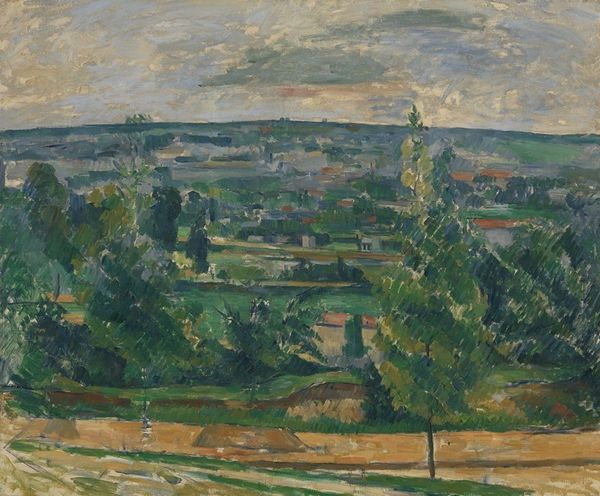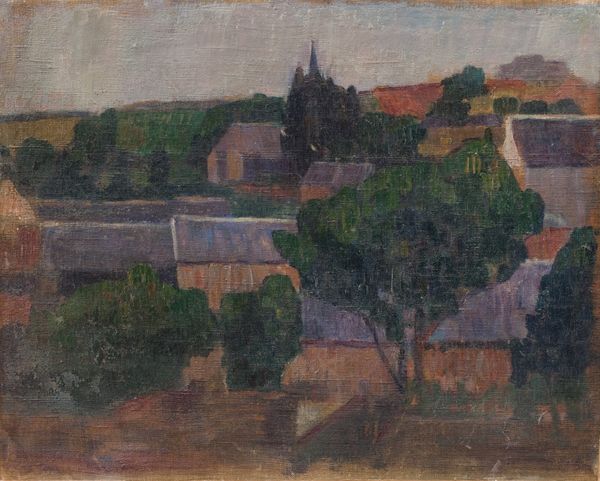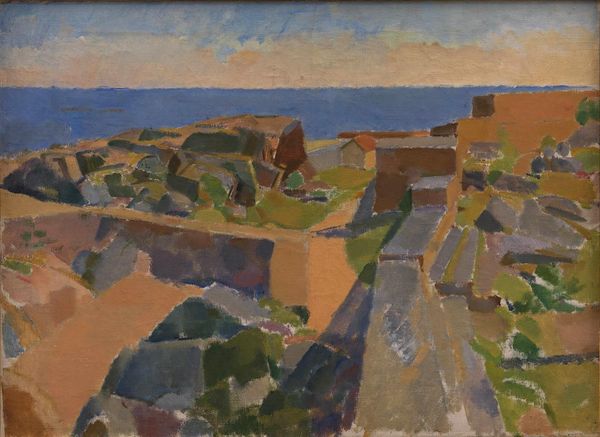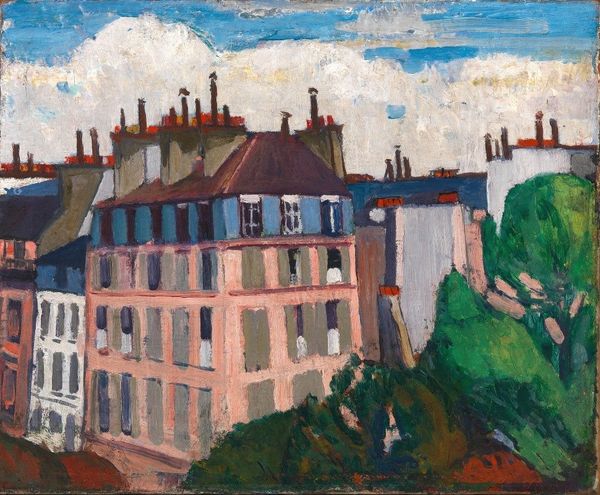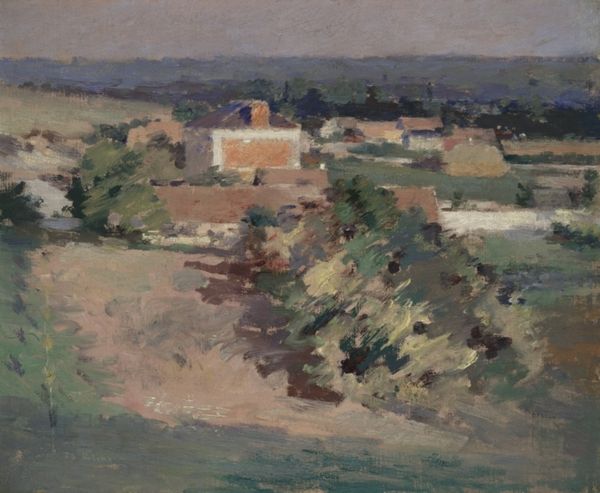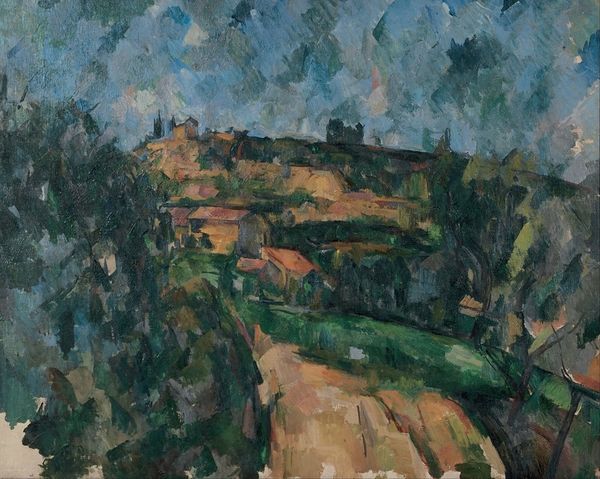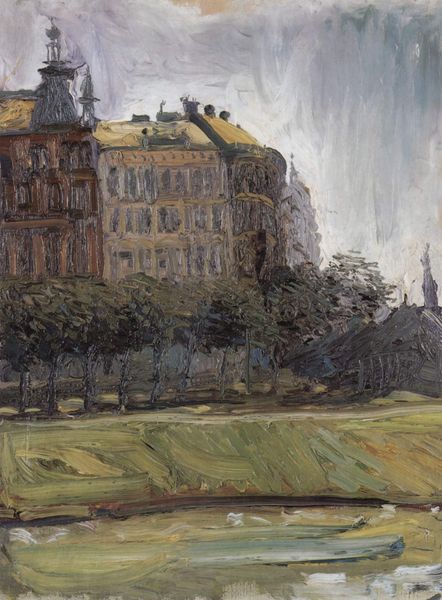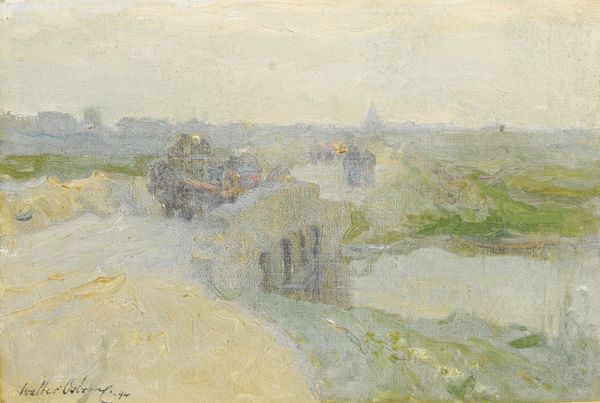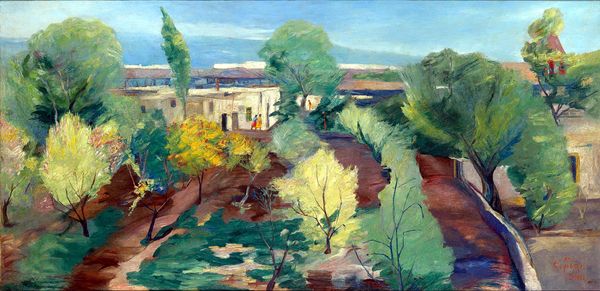
Copyright: Public domain
Editor: This is Harriet Backer's "View from My Balcony, Hansteensgate 2," painted in 1915. It's an oil painting, and I find the muted palette and somewhat obscured view very intriguing. What strikes you most about this piece? Curator: What I find interesting is how this seemingly simple landscape, or cityscape, functions as a window onto a specific historical and social context. Think about Norway in 1915. A time of relative peace and growing national identity, but also a period overshadowed by the looming presence of World War I elsewhere. Does that sense of quietude, or perhaps even isolation, resonate with you in this view? Editor: I can definitely see the quiet aspect. The limited view, confined to the balcony perspective, gives it an insular feel. Were female artists like Backer, who often focused on domestic or everyday scenes, sometimes overlooked because of those subjects? Curator: Absolutely. There's been a long-standing tendency, historically, to undervalue art that depicts the domestic sphere, particularly when created by women. These works weren't always seen as tackling the "grand narratives" of history or myth, narratives then considered more important and valuable. Yet, Backer offers us a perspective on the quiet corners of life, those intimate spaces and moments that speak volumes about a particular culture and time. Isn't there a public role in presenting these types of artistic expression, making these statements more prominent? Editor: That's a great point. The value in the everyday, elevated through art. I’ll definitely look at similar paintings with that new perspective now. Curator: Indeed. Consider how societal biases shaped both the creation and reception of the art; perhaps more attention can change this in the future.
Comments
No comments
Be the first to comment and join the conversation on the ultimate creative platform.


